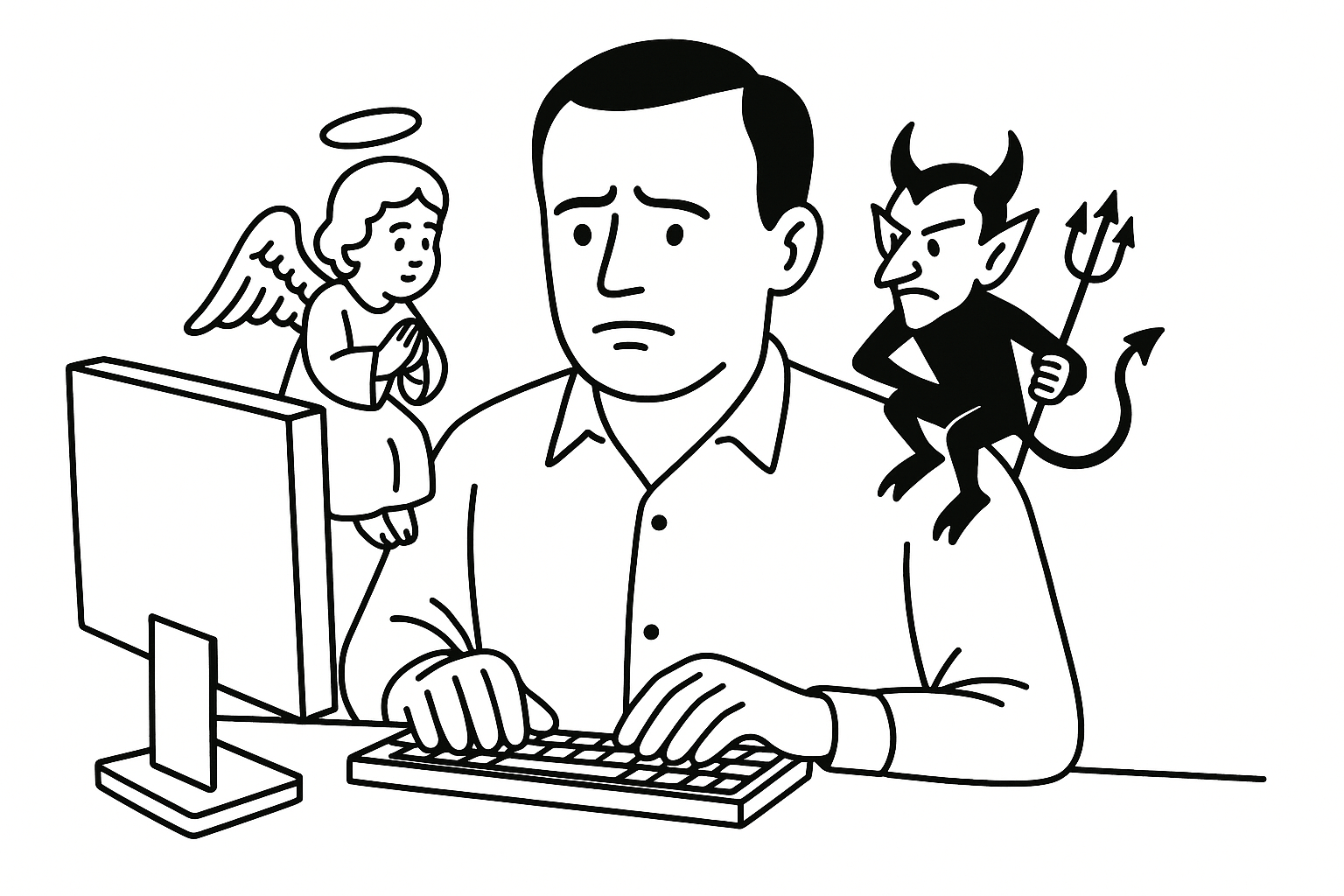
I learned the hard way that burnout creeps in quietly. Two summers ago I was running a homeless-shelter during a COVID outbreak. When the crisis eased I was quietly demoted… “a fresh start,” I told myself. The truth surfaced in staff meetings where my bottled-up resentment hissed like steam through every comment. By the time I recognised it, the damage, both to me and the team, was done.
Burnout rarely crashes down on you. Instead, it rises like a slow fever. The remedy is a thermometer you can read before the heat spikes. That’s what this one-page worksheet is.
The Anatomy of the Page
Warning Signs
First, capture the earliest quirks that tell you something’s off. Mine are stress-eating, tuning out, and feelings of frustration. Yours might be jaw-clenching, scrolling news in bed, or lingering too long over small tasks. Naming the signals turns vague unease into visible data.
Quick Fixes
Next, list small actions that cool the fever on contact. I jot the negative thought (“whisper”), add a matching virtue garnish, or choose a form of self-care that doesn’t end in a junk-food sprint. Your fixes might be a five-minute walk, box breathing, or a podcast.
Recovery Benchmarks
Burnout prevention isn’t just about putting out fires; it’s about knowing when the flame is out. My benchmark is simple: when the positive whispers on my ledger outnumber the negative ones, I’m back on track. Pick markers that matter to you: sleeping before eleven, finishing a day without doom-scrolling, or feeling genuine curiosity in a meeting.
Support Circle
No one white-knuckles their way out of burnout. My lifelines are a list of uplifting quotes and prayer. Your circle could be a mentor on speed-dial, a trusted friend, or a therapist’s number taped to the edge of the page. The point is to make help a single glance away.
My Goal for This Week
Finally, aim at something positive rather than simply avoiding disaster. This week I’m tracking concrete progress on last week’s challenges and looking for evidence of God’s hand in the details. Maybe your goal is to finish the proposal without stealing Sunday from your family or to arrive at Friday with energy left for the gym.
(Download the ready-to-print PDF here: Early-Warning Checklist. It’s not ledger-style journalling. For that, please buy the book).
How to Use It
Fill in the five boxes today—tomorrow is already one step closer to burnout. Post the sheet where your eyes land often: the corner of a monitor, a fridge door, the first page of a notebook. Glance at it every hour if you can, at least once a day. A single tick or two-word note is enough; visibility does the heavy lifting.
When one warning sign pops up, note it and move on. When two or three cluster, trigger a Quick Fix immediately. If a Recovery Benchmark lights up—say, three resentment-free days—mark it and celebrate. Tiny wins cool the system faster than grand gestures postponed.
Why It Works
One page, no friction. With everything in reach you can act, not reorganise. No app store search, no colour-coded spreadsheet—just the next pencil stroke.
Your own signals. Because you choose the clues, the worksheet speaks your language and never feels like homework.
Action over anxiety. Quick Fixes tell you what to do the moment stress appears, and Recovery Benchmarks show when the fix is working. Worry turns into movement, movement into relief.
The Bigger Picture
This worksheet is a free sample of Ledger of Life, the ledger-style journal that keeps my days balanced by tracking positive inputs (“Angels”) and negative drains (“Devils”). The full ledger provides six months of structured pages. It’s enough space to spot patterns long before they snowball. Try the one-pager first; if it helps, the ledger is waiting.
Print it, post it, and keep the slow burn from turning into a blaze. Your future self, and everyone around you, will thank you.